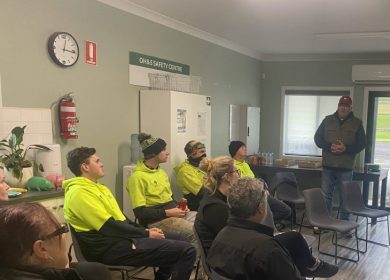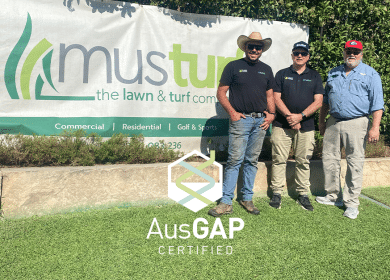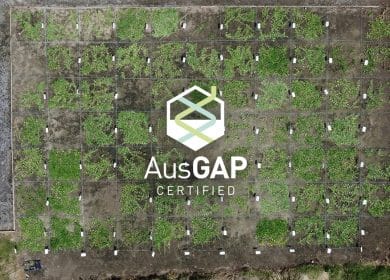
Field inspections are the bread and butter of the AusGAP turf certification program. Receiving AusGAP certification on a turf variety takes hard work and to back that up, field inspections are used to maintain that certification and genetic purity. Find out more about AusGAP field inspections and how they ensure the best quality product is delivered to your site.
AusGAP field inspections occur biannually, and the growers supplement our inspections with quarterly self-inspections of their own.
Who is involved in the inspection process?
All farms have at least one AusGAP Certified Representative (ACR), and they are a crucial part of the field inspection procedure by communicating with the AusGAP Program Manager.
The ACR ensures all farm staff adhere to AusGAP’s requirements before the Program Manager or inspector can begin their thorough and comprehensive field inspections:
• Fields must NOT be mowed as least 5 days prior to the inspection, but no more than 2 weeks.
• Selective herbicides can be used in order to enhance colour difference between plant types
• All required paperwork: pre-planting assessments, planting form, quarterly self-inspections are up to date.
There may also be a third party involved in the process such as ITGAP or ASTC, who are able to provide their services as a third-party inspection. This is done to ensure the quality and assurance of the AusGAP Program.
What are the requirements for pre-inspection?
There are multiple checks included in the farm visit that must be made before the inspector can step foot on any paddock. At every entry point of the farm there is expected to be a bio security notice. Some visitors or their vehicles can put the bio security of the farm at risk and ultimately mean the genetic purity of AusGAP’s certified varieties are at risk if not followed.
Paddock maps are to be up to date and sent prior to visit. This allows AusGAP to keep track of stock and evaluate the genetic purity of the registered and certified stock.
Every aspect of business compliance is audited as this backs up and provides context to what is happening in the paddock.
Field inspection is ready to commence, now what?
Field inspections are used to evaluate compliance and have required checks that must be made to meet the minimum standard.
Field isolation requirements are part of the high standards AusGAP enforces. What is field isolation? An artificial barrier and/or strip of bare land to prevent cross contamination, AusGAP require a minimum of 1.5 metres between grass varieties – yes kind of like covid regulations… but for grass – other varieties and perennial grasses have a strong chance of cross contamination if not monitored.
Walking every paddock containing AusGAP certified varieties is the core of the inspection process. This is done to ensure turf is free of pests, weeds, and disease. During grow in is the most important time to ensure weed pressure isn’t too much.
AusGAP use an inspection flagging system to monitor contaminates or sections of paddock that need to be monitored. A yellow flag is used to mark a contamination and/or eradication area. A blue flag is used to mark an area to be monitored or a weed treatment area.
There are other quality assessments to be made when assessing for AusGAP certification:
• Are field borders maintained between certified varieties and non-production areas?
• Does irrigation equipment move from low non-producing areas into the production field or from one variety to another?
• Is a wash down bay available to clean equipment between varieties and is there an established procedure for cleaning equipment?
• Is a wash down bay available to clean equipment between varieties and is there an established procedure for cleaning equipment?
• Is any part of a field subject to flooding?
Conducting field inspections is AusGAP’s way of monitoring and auditing turf and business standards. We have our high industry standards to assure the customer and end user that the turf they are receiving will be true to type and genetically pure.


